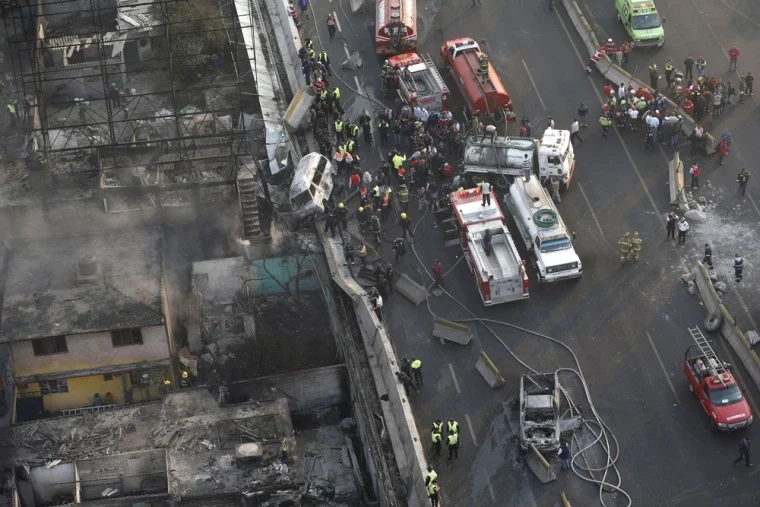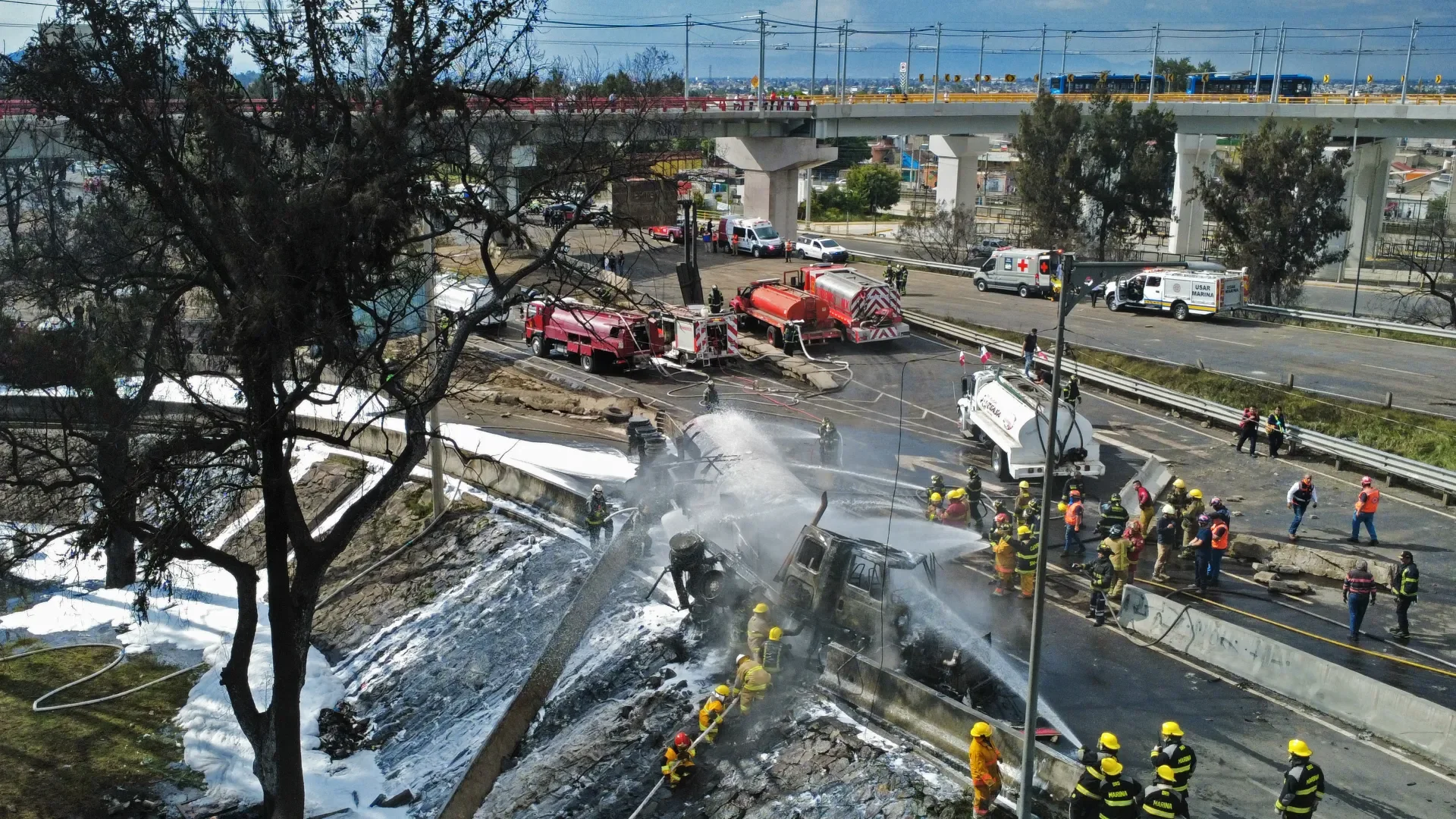Mexico City Tanker Explosion sees death toll climb
At least 25 people confirmed dead after tanker carrying liquefied gas exploded in Iztapalapa.
More than 15 people remain hospitalized with severe burns.
Critics say outdated regulations allow hazardous cargo through crowded neighborhoods.
Mexico has a history of deadly fuel-related accidents, including Ecatepec 2012 and Hidalgo 2019.
By MexicoFocus Staff
Mexico City, September 22 — The death toll from last week’s tanker truck explosion in eastern Mexico City has climbed to 25, authorities confirmed Monday, making it one of the capital’s deadliest urban accidents in recent years.
The blast, which ripped through the densely populated Iztapalapa borough after a tanker carrying liquefied gas overturned and ignited, left charred vehicles, destroyed homes, and dozens injured. Emergency crews spent hours battling flames, while families scrambled to locate missing relatives in the aftermath. Officials say at least 15 people remain hospitalized with severe burns.
Regulatory Gaps Exposed
The accident has reignited debate over the transport of hazardous materials through crowded neighborhoods in one of the world’s largest cities. Mexico City officials acknowledged that the tanker was operating on a permitted route, but critics argue that such approvals reflect outdated regulations that fail to account for population density and infrastructure risks.
“Explosions like this are not just tragic accidents; they are the result of weak enforcement and poor planning,” said urban safety specialist Alejandro Villalobos. “Routing fuel tankers through narrow, heavily populated areas is a recipe for disaster.”
A Pattern of Disasters
Mexico has a history of deadly fuel-related accidents. In 2012, a tanker truck crash in Ecatepec, just north of the capital, killed more than 20 people, while pipeline explosions in Hidalgo state in 2019 left more than 130 dead. Investigations often highlight lapses in safety standards, including vehicle maintenance, driver training, and illegal fuel operations.
Authorities insist stricter controls are in place today, but families of victims say tragedies keep repeating. “We keep hearing about new safety measures, but nothing changes,” said María López, who lost her brother in the Iztapalapa blast. “Our neighborhoods should not be treated as corridors for hazardous cargo.”
Urban Planning and Spatial Justice
Experts note that rapid urban expansion has made accidents more deadly. Iztapalapa, the capital’s most populous borough, is a hub of informal housing and narrow streets, where industrial routes intersect with daily residential life. The lack of dedicated hazardous-material corridors means trucks often pass within meters of schools, markets, and apartment blocks.
“Spatial justice is at the heart of this issue,” said architect and planner Gabriela Castañeda. “We need to ask why the poorest and most vulnerable neighborhoods are the ones exposed to these risks.”
International Implications
The explosion has drawn international attention as foreign companies supplying gas and fuel to Mexico face questions over logistics safety. The U.S. Embassy in Mexico City expressed condolences to the victims’ families and offered technical support on hazardous materials management.
At the same time, international watchdogs are likely to scrutinize whether Mexico’s safety framework meets global standards. Mexico is a major importer of liquefied petroleum gas, much of it from the United States, and its handling of distribution accidents could affect trade flows and investment confidence in the energy sector.
Calls for Reform
In response to public outrage, President Claudia Sheinbaum said her administration would review hazardous transport regulations and promised “no impunity” for any negligence. The trucking company involved has had its operations suspended pending investigation.
Urban policy groups are calling for a long-term overhaul. Proposals include rerouting hazardous cargo around the city, investing in underground pipelines to reduce road transport, and creating independent monitoring systems.
For residents of Iztapalapa, however, the priority is recovery. Streets remain cordoned off, displaced families are living in temporary shelters, and funeral processions continue daily.
“This tragedy should be the last of its kind,” said Villalobos. “But unless Mexico confronts the structural issues behind these explosions, it won’t be.”




